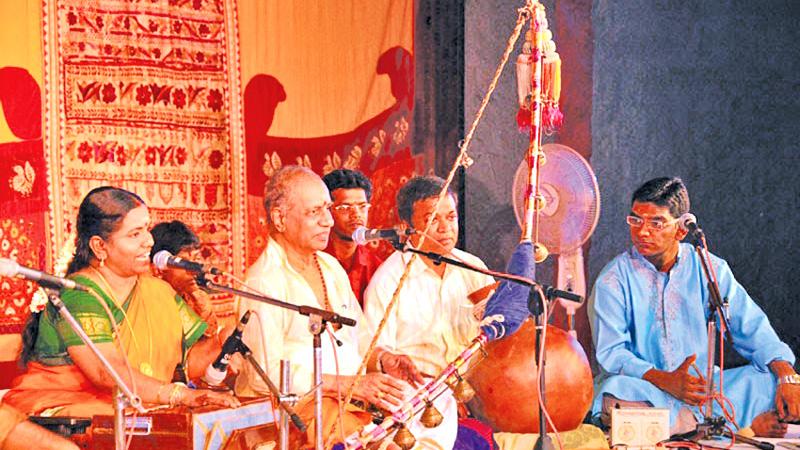
Villu Paatu is one of the traditional Tamil entertainment art. Generally high pitch Tamil folk music is adopted for this art form. This tradition which is a part of Tamil culture, is widely practised among the Tamil community all over the world.
 Even today, despite numerous modern well developed electronic system in the mass media, the metropolitan and rural Tamil masses gather to watch and enjoy this ancient traditional entertainment art form. But, today live Villu Paatu programs are quite rare.
Even today, despite numerous modern well developed electronic system in the mass media, the metropolitan and rural Tamil masses gather to watch and enjoy this ancient traditional entertainment art form. But, today live Villu Paatu programs are quite rare.
A few years back some non-commercialised state owned television channels did telecast this traditional art form through their channels, with the intention of preserving the traditional cultural heritage of the Tamil society.
Such scenarios provided a good opportunity for the general viewers, as well as for the younger generation to have a glimpse to know their ancient traditional art form, from wherever they are.
Literally Villu Paatu means ‘Bow Song’. In Tamil Villu means bow’ and Paatu means song. The musical instrument used for this performance in the shape of a bow, hence the name Villu Paatu. The large bow is about four to five feet in length, used without arrows. This long bow is rationally used as a musical instrument. A very simple language based music, along with a mixed variety of thrilling quick tempo is adopted for this traditional art form. Generally Villu Paatu is very popular among the average middle class population.
The main story teller who illustrates the story in a captivating manner, and a few (seven to eight) supportive members also participate in this troupe to bring out the theme of the story effectively along with musical support. In between, they engage in humorous dialogues between themselves for the theme to reach the audience. Normally with this, folk music is also accompanied with some classical musical instruments, such as Miruthangam, Dholak, Khole, and Kanchira.
Besides these classical musical instruments, a few variety of folk musical instruments are also adopted. For instance, Udduku, a handy folk drum is also often used in Villu Paatu. The player keeps the drum in a horizontal position when he plays the drum.
The second member plays the wooden block thala (cymbal) which is often referred to as Kashtal. Third person of the troupe plays the metallic (cymbal) thala.
It is generally said that this art form was originated in the 15th century. It is said that originally this was introduced by a person named Arasa Pulavar. This simple homemade instrument is quite popular all over the world, especially among the worldwide Tamil population. Chances of viewing live Villu Paatu practices are considerably very rare in this present era.
Earlier, to impart certain values or religious doctrine to the devotees, the temple authorities organised Villu Paatu shows daily after the annual temple festivals. Some professional troupes were permanently engaged by the temple authorities.
Initially this bow was made out of Palmyra wood and but presently it is made of metal. Because metal made bow is easy to carry, sometimes the bow rests on a mud pot. The two edges of the bow are connected with high tension string. In between small cymbals and sometimes small bells are tied on the main high tension string.
The main person sits in the middle, in front of the bow and he narrates the selective theme of the story. While narrating and singing, he now and then strikes the main string of the bow to give effect to the performance.
The person uses two sticks. The two sticks are called veesukols. During the performance the troupe members exchange arguments or discussion among themselves, which greatly amuses the audience. Sometimes the troupe or team is divided into two. Earlier the Villu Paatu selected the only religious based epics for its theme, but nowadays, sometimes Villu Paatu teams adopt social themes for their programs to bring out social vigilance among the masses.
Within the team, one section opposes the views of the other. The opposing team is called Lavani Paatu. Yet both the sections of the team are considered as one. Villu Paatu is regarded as one of the most attracting folklore of Tamil culture.
